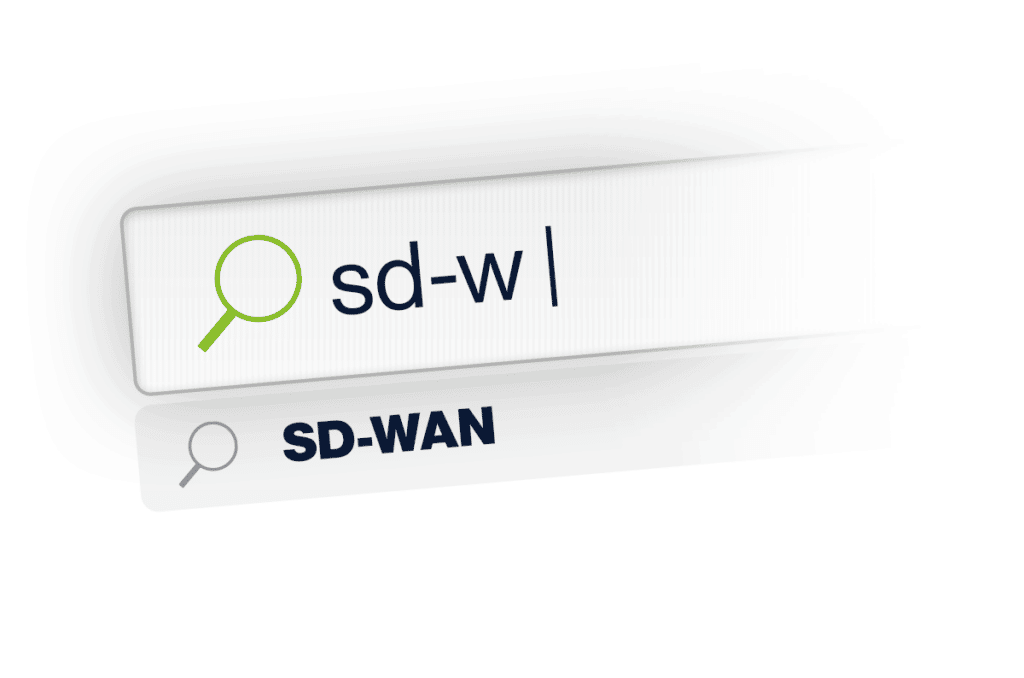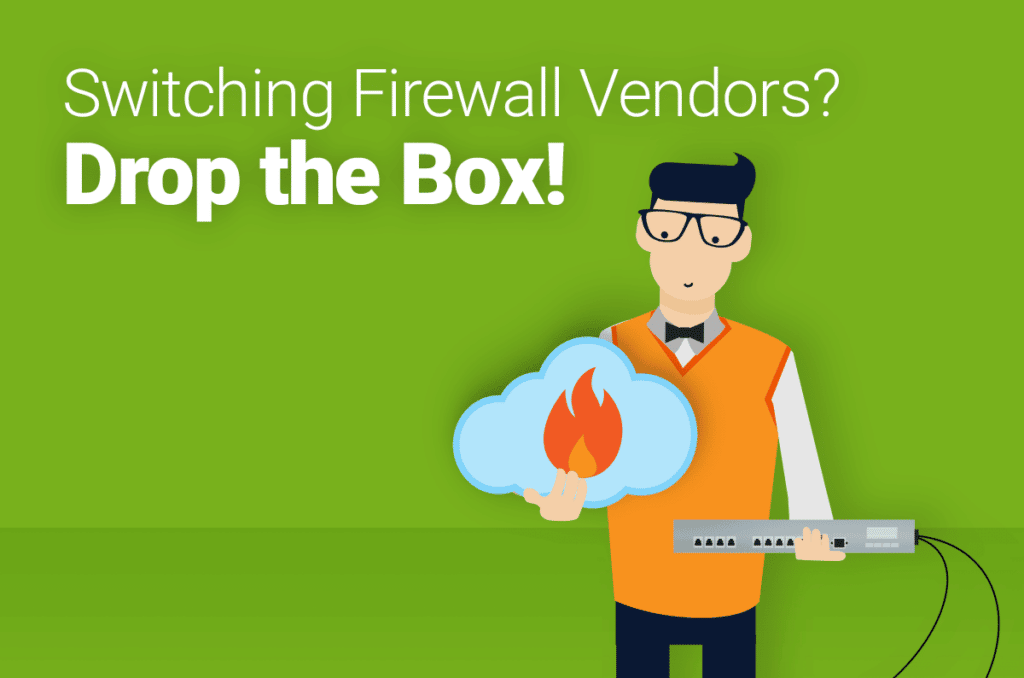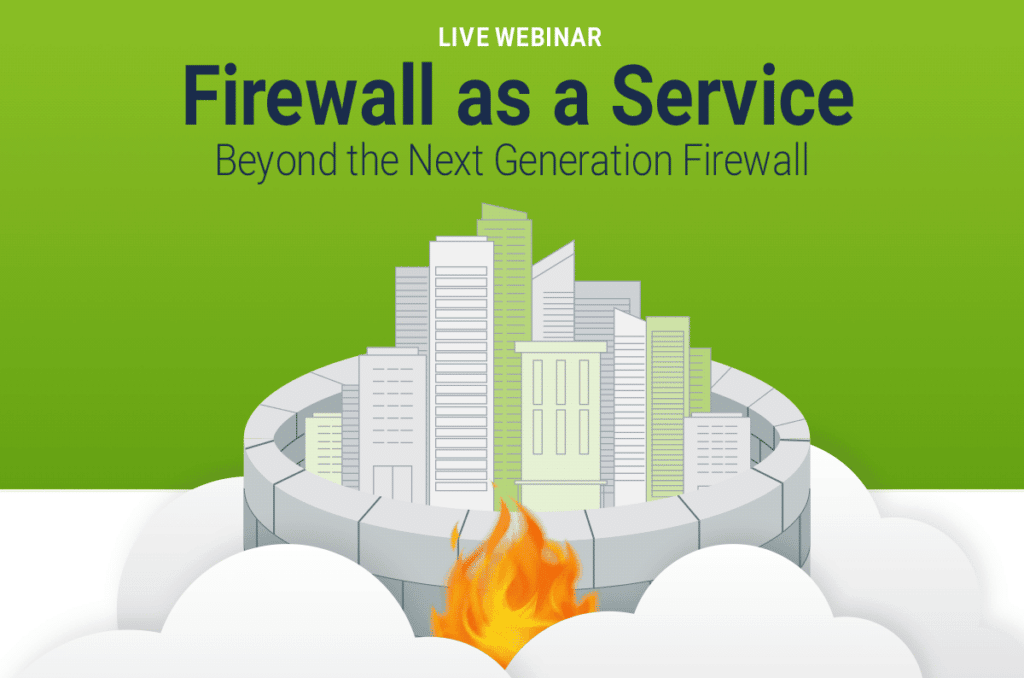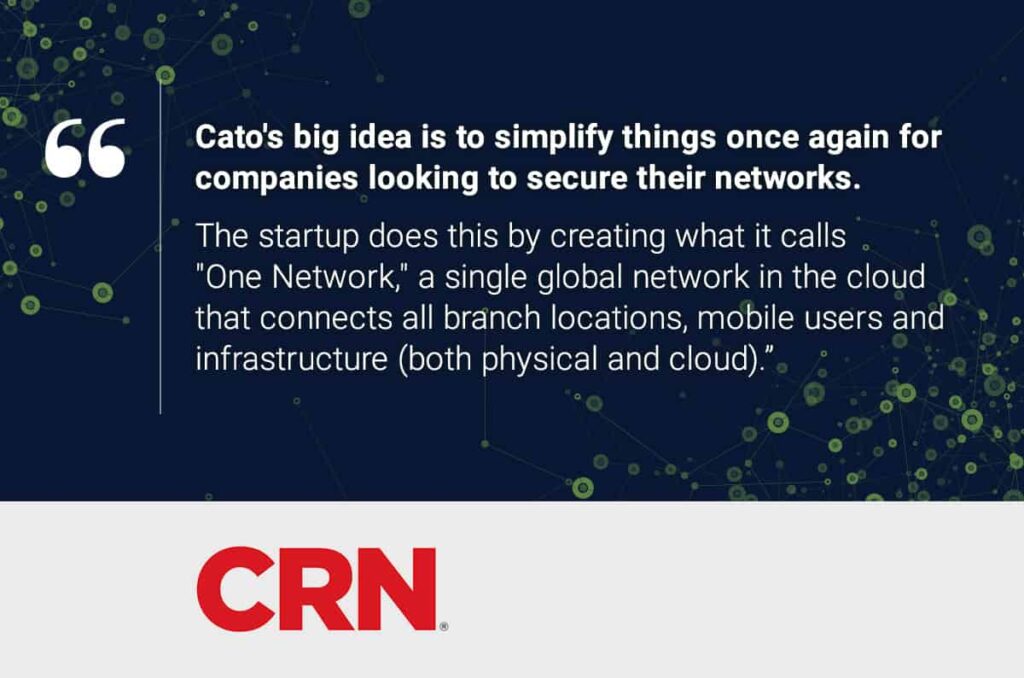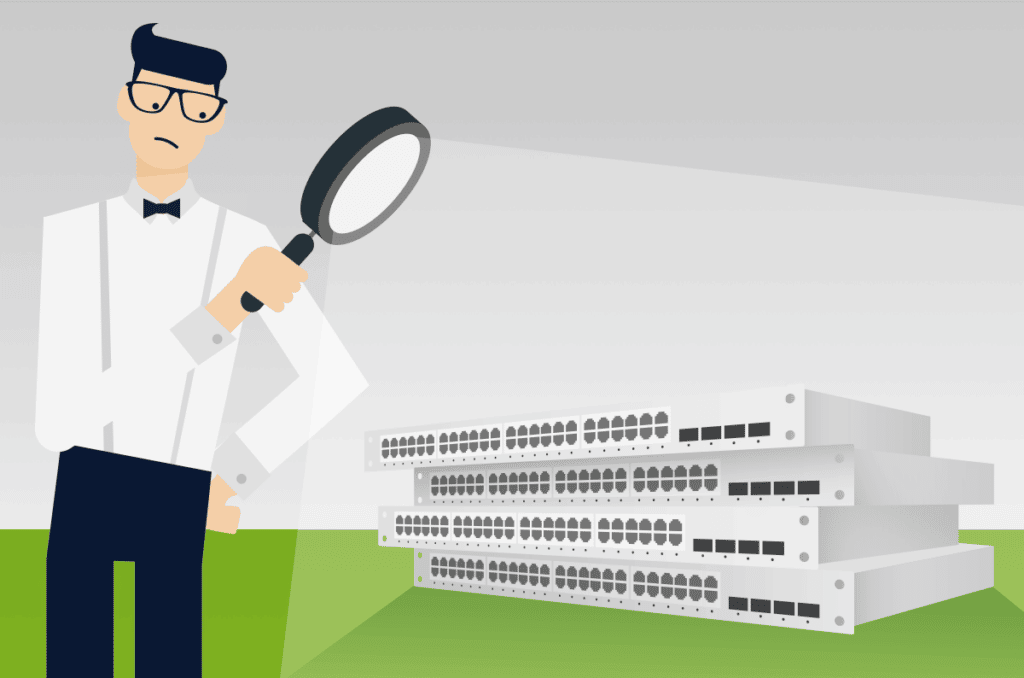WAN optimization has been with us for a long time. Born alongside the expensive MPLS data service, WAN optimization appliances allowed organizations to squeeze more... Read ›
WAN Optimization in the SD-WAN Era WAN optimization has been with us for a long time. Born alongside the expensive MPLS data service, WAN optimization appliances allowed organizations to squeeze more bandwidth out of thin pipes through compression and deduplication, as well as prioritizing traffic of loss-sensitive applications such as remote desktops.
The dramatic changes in network traffic patterns, from inwards towards the data center to outwards towards the cloud, is challenging the base premise for dedicated WAN optimization appliances.
First, the growth in Internet- and cloud-bound traffic is accelerating the introduction of direct secure Internet access at branch locations. These links have a higher capacity at a lower cost, making bandwidth expansion easier and more affordable. Second, the use of public cloud applications is incompatible with using a WAN optimizer at both edges of the link, as enterprises can’t control traffic going to cloud applications.
Rohit Mehra, Vice President of Network Infrastructure at IDC and co-author of a short, but useful guide “Benefits of a Fully Featured SD-WAN”, comments on the effect cloud services has had on the WAN.
“Traditional WANs were not architected for the cloud and are also poorly suited to the security requirements associated with distributed and cloud-based applications. And, while hybrid WAN emerged to meet some of these next-generation connectivity challenges, SD-WAN builds on hybrid WAN to offer a more complete solution.”
SD-WAN Edge Challenges
A typical SD-WAN solution includes SD-WAN edge appliances which enable organizations to use multiple transports (MPLS and Internet) in branch locations. However, they are often totally dependent on MPLS to ensure that loss sensitive applications perform in a consistent manner. Because standard SD-WAN solutions don’t provide an SLA-backed transport, organizations are obligated to rely on MPLS. An SLA-backed backbone can provide consistent performance particularly for sites where Internet performance may not be satisfactory.
Integrated Network Security
SD-WAN edge solutions can provide direct Internet access at the branch. However, they typically do not include a full network security stack and require customers either to deploy additional security solutions at every location, backhaul traffic to a datacenter, or use cloud-based security services.
Supported Edges
SD-WAN edge solutions were designed with physical locations in mind. Typical WAN architectures treat cloud datacenters and mobile users as an afterthought, resulting in limited support for cloud infrastructure and mobile users.
Cato Networks SD-WAN Solution
In contrast, Cato has built a global, SLA-backed backbone that runs an integrated networking and security software stack. Cato has 39 PoPs worldwide, and they are fully meshed over multiple tier-1 IP transit providers with SLA-backed latency and packet loss. Cato provides consistent and predictable global connectivity at an affordable price, which allows customers to use high quality Internet last mile and the Cato Cloud to replace MPLS.
Network security is built into the Cato Cloud. Cato provides a full network security stack, including a next generation firewall, secure web gateway, anti-malware and IPS built into the SLA-backed backbone. There is no need to deploy branch security appliances, backhaul traffic, or introduce new security services. All policies are managed within Cato’s management application.
Cato was built to seamlessly connect all enterprise network elements including physical locations, cloud infrastructure, and mobile users. With Cato, SD-WAN and network security is available globally and for all traffic.
Multi-Segment Optimization
Cato’s solution provides optimization at several segments of the WAN.
Last Mile:
Multiple Transports
Active/Active
Application QoS
Policy-Based Routing (PBR)
Forward Error Correction (FEC)
Bandwidth Throttling
Cloud:
Optimal Egress
Shared Network / Datacenter Footprint
Middle Mile:
Global SLA-backed backbone
Optimal Routing on Multiple Carriers
Throughput Maximization (TCP Proxy)
Forward Error Correction (FEC)
Industry experts, like Ivan Pepelnjak, have seen first-hand the benefits of SD-WAN. Pepelnjak has been in the business of designing and implementing large-scale networks as well as teaching and writing books on the topic for almost three decades. He comments in his blog about why businesses would move to SD-WAN:
“There’s a huge business case that SD-WAN products are aiming to solve: replacing traditional MPLS/VPN networks with encrypted transport over public Internet….Internet access is often orders of magnitude cheaper than traditional circuits. Replacing MPLS/VPN circuits with IPsec-over-Internet (or something similar) can drastically reduce your WAN costs. Trust me – I’ve seen dozens of customers make the move and save money.”
Find out more about SD-WAN as a service with integrated security and optimization and more, by subscribing to Cato Network’s blog.
The world of networking has a language of its own which is continually evolving as new technologies emerge, innovative ways of delivering network services are... Read ›
Networking Glossary: Top 16 Networking Terms Everyone Should Know The world of networking has a language of its own which is continually evolving as new technologies emerge, innovative ways of delivering network services are deployed, and global connectivity becomes increasingly essential.
While the list of “must-know” terms is too long to cover in a single blog, here are some to incorporate into your vocabulary as you evaluate how cloud networking can benefit your organization.
Networking Glossary
BYOD (Bring Your Own Device) — The practice of employees using their personal mobile devices to do their jobs, typically requiring connection to enterprise networks and accessing enterprise data and cloud applications. This trend brings with it many challenges, which are described in detail here.
Firewall as a Service (FwaaS) — a firewall delivered as a cloud-based service. Unlike appliance-based firewalls that require management of discrete firewall appliances, FwaaS is a single logical firewall in the cloud that can be accessed from anywhere. Click here for a detailed overview of FwaaS.
Hybrid Wide-Area Network (Hybrid WAN) — a type of wide area network that sends traffic over two or more connection types. For example, an MPLS connection and an Internet connection. .
Internet Backhaul — moving large amounts of data between major data aggregation points. Although it’s expensive, organizations often use MPLS to backhaul branch traffic to their corporate data centers to secure traffic and enforce policies.
Jitter — the varied delay between packets that can result from network congestion, improper queuing, or configuration errors. See also WAN Latency.
Metro Ethernet — also known as “carrier Ethernet,” is an Ethernet-based network in a metropolitan area used for connectivity to the public Internet, as well as for connectivity between corporate sites that are separated geographically.
MPLS (Multiprotocol Logical Switching) — a technology for moving traffic between locations. Services based on the MPLS technology represent the traditional approach for providing predictable connectivity between locations .
NFV (Network Functions Virtualization) — abstracts network functions, so they can be installed, controlled, and manipulated by software that runs on standardized compute nodes.
Network Throughput — the rate of successful message delivery. It is affected by latency, packet loss and WAN optimization.
QoS (Quality of Service) — the capability of a network to provide better service to selected traffic, including dedicated bandwidth and controlled jitter and latency.
Secure Web Gateway — a cloud-based solution that filters unwanted software/malware from user-initiated Internet traffic and enables granular and central security policy creation.
SLA (Service Level Agreement) — an agreement between a service provider and the customer that describes the products or services to be delivered, and outlines scope, quality, and responsibilities.
SDN (Software-defined Network) — a network architecture that separates the control and data planes in networking equipment. Network intelligence and state are logically centralized, and the underlying network infrastructure is abstracted from applications.
SD-WAN (Software Defined Wide Area Network) — an application-based routing system, rather than a traditional, packet-based network routing system. It uses SDN to determine the most effective way to route traffic to remote locations. For a detailed overview of SD-WAN and its benefits for global business, refer to our explainer here.
VPN (Virtual Private Network) — a network technology used to create a secure network over the Internet or any private network. It links two or more locations on a public network as if they are on a private network.
Latency — the time needed to reach a destination. Latency is typically measured from one destination and back (called round trip time or RTT). See also Jitter.
If you’re interested in learning more about the concepts behind these and other cloud networking terms, make sure to subscribe to our blog.
The USA hosts a number of major cyber security conferences that are ideal for networking professionals to keep up with latest trends and meet with... Read ›
Top Security Conferences in the US The USA hosts a number of major cyber security conferences that are ideal for networking professionals to keep up with latest trends and meet with peers from across the globe. Below we've listed the best with some ideas of what happens at each event so you can start planning your attendance for 2018.
DataConnectors Seattle
When: June 7
Where: Seattle, Washington
This years’ DataConnectors conference in Seattle is focused on email and cloud security, and will have over 40 exhibitors and 8 speaker sessions. The opening speaker is Steve Heaney from the email security platform Mimecast, who will focus on the best practices for enterprises to bolster their email security protection. The one-day conference is open for registration until the conference begins (or until it’s sold out) .
BSides Asheville
When: 22-23 June
Where: Asheville, North Carolina
Now in it’s 5th year, BSides Asheville prides itself on providing a platform where cybersecurity professionals from different disciplines can come together to share their opinions and discoveries with the security community. This year’s keynote address will be given by the CEO of Lares Consulting, Chris Nickerson, an information security veteran with 20 years experience in the field of information security.
Blackhat USA
When: 4-9 August
Where: Las Vegas, Nevada
Blackhat has gone a long way since its inception 18 years ago. It is now one of the most respected security conferences in the world attracting over 15,000 IT professionals.. The Blackhat USA speaker lineup is still being scheduled, but some keynote presentations at Blackhat 2017 are available to give you a feel for the upcoming conference.
USENIX Security ‘18
When 14-15 August
Where: Baltimore, Maryland
The 27th USENIX Symposium is a three day event focusing on computer system privacy and security. As a recognized 501(c)(3) nonprofit USENIX events are more about the technical, rather than business, side of security, and they brand themselves as completely ‘vendor neutral’. The speaking lineup for this year hasn’t been finalized, but last year’s event touched on everything from cyber threats in newsrooms to attacks on Kernel memory, and we’re looking forward to an equally engaging lineup this year.
Cyber Security Exchange | Healthcare
When: 23 - 25 September
Where: Chicago, Illinois
Healthcare networks are under constant threat from malware and ransomware developers. This conference is dedicated to providing healthcare CISOs with the strategies and tools to defend their networks against these attacks. Sessions include topics such as ‘Beyond Ransomware: Healthcare Networks Prepare for the Next Cyber Attack” and “Reclaiming Control and Reducing Risk at Your Endpoints”. Speakers and panelists include Heath Renfrow, a former CISO at United States Army Medicine, and Jim Routh, CSO at Aetna.
Infosecurity North America
When: 3-4 October
Where: Boston, Massachusetts
This massive event brings everything information security related under one roof in a leading industry event and expo. The conference showcases innovative solutions from both start-ups and established cybersecurity vendors. Although the speaker list is still being firmed up, the show is likely to attract the biggest names in cybersecurity. Renowned experts, including Senior NSA official David Hogue, and Lance Spitzner of the SANS Institute, were keynote speakers at the last year’s conference. Conference sessions are tailored to specific industries and roles, and so it is easy to pick a group of talks that fit perfectly with your interests and needs.
Derbycon
When: 5-7 October
Where: Louisville, Kentucky
Derbycon is a fun cybersecurity conference held in Louisville, Kentucky, bringing together everyone from hobbyists to longtime security professionals. The theme for this year’s conference is ‘Evolution’, focusing on some of the projected changes to the InfoSec sector and how professionals can do their part to help advance positive changes in the InfoSec industry. The conference is still accepting calls for papers for anyone wishing to participate.
When it comes to keeping up with the latest developments in network security, attending industry events and conferences is a must for networking professionals. Networking professionals from across the globe will be attending the events listed above. Are there any other events you think should be added to the list? Let us know at @CatoNetworks
Keeping up to date with changes in cybersecurity is an ongoing process. The security landscape adapts and changes rapidly as cybercriminals find new techniques to... Read ›
Top 10 Network Security Conferences in Europe Keeping up to date with changes in cybersecurity is an ongoing process. The security landscape adapts and changes rapidly as cybercriminals find new techniques to attack enterprise networks. One of the best ways of staying up to date with the latest developments in the threat landscape is by attending industry events and conferences. Europe has a number of security conferences that offer expert talks, seminars, and workshops, as well as exhibitions showcasing some of the most innovative companies in the space. Check out the list below and add the dates to your diary for 2018.
Infosecurity Europe
When: 5-7 June
Where: London, UK
Infosecurity Europe is one of the longest running and largest cybersecurity conferences, with multiple events across the globe each year. The conference attracts hundreds of vendors who showcase their products on the expo floor. There are also educational sessions and workshops on cybersecurity issues by renowned experts in the field. In past years, security experts such as Bruce Schneier, Graham Cluley, and Jack Daniel have given talks. In 2018, the exhibition promises to have well over 110 network security focused vendors. Be sure to join the talk being given by Cato security researcher, Avidan Avraham, and head of security research, Elad Menahem, as they explain a new approach for detecting malware and C&C traffic without the use of signatures.
BSides London
When: 6 June
Where: London, UK
The BSides London InfoSec conference is returning to London for the 8th time with the theme “BreachDay Clock: Two Minutes to Midnight”. With the conference coming up in less than a month, there’s still no public list of speakers, but the 2017 BSides London event included exciting talks including “Hacking just like the Movies” and “Small Time Currency Mining Botnets.”
RSA Unplugged
When: 7 June
Where: London, UK
RSA Unplugged is a more casual version of the famous RSA Security Conference. If 2017 is anything to go by, the 2018 RSA Unplugged conference should be an excellent place to get up close and personal with specialists in network security. 2017 sessions covered diverse areas from insider threats to the use of AI by cybercriminals to a lighter look at ransomware and IoT hacks. Although the agenda isn’t set yet, you can still register interest.
4. Nuit du Hack
When: 30 June- 1 July
Where: Paris, France
Inspired by DEFCON in the United States Nuit du Hack is open to anyone interested in hacking and tech. There are both French and English talks, with the overall goal being to “strive for better understanding and continuous improvement of security systems using new technologies”. The talks in English include topics such as vehicle security and quantum key distribution systems.
IP EXPO Europe 2018
When: 3-4 October
Where: London, UK
IP EXPO Europe is one of the largest IT events in Europe, with dozens of industry leaders and exhibitors in attendance. The EXPO is broken up into a number of different categories, including “Cyber Security Europe” with speakers from a wide array of IT and security fields. Last year’s speakers included Rohit Ghai, the president of RSA and Brad Anderson, VP of Enterprise Mobility at Microsoft. The 2018 EXPO still hasn’t published their list of speakers, but expect big names to present this year as well.
CyberSec
When 8-9 October
Where: Krakow, Poland
The CyberSec forum is all about creating processes and collaboration based on a European wide cybersecurity cooperation. The conference brings together experts from across all areas of cybersecurity to debate and discuss topical and emerging areas of interest. The conference is still firming up speakers, but interviews with some of 2017 experts can be seen online.
DevSecCon London
When: 18-19 October
Where: London, UK
The yearly DevSecCon conference in London brings together some of the world’s biggest stars in the world of DevOps, security, and development. Last year’s keynote address was given by Daniel Cuthbert, the Global Head of Cyber Security Research at Santander Bank. His talk focused on ‘Why developers are more important now than ever before’. Other speakers included Tim Kadlec, former Head of Developer Relations at Snyk, speaking about ‘Securing a Third Party Web’ and Christoph Hartmann, Lead Engineer at Chef, on ‘DevSec: Continuous Compliance’.
DeepSec
When: 27-30 Nov
Where: Vienna, Austria
DeepSec is a non-vendor event that promises to consider speaking proposals from anyone with something interesting to say on cybersecurity and with an emphasis on finding new talent. This year’s speakers lineup has yet to be published, but interviews and slides from the 2017 conference can be found on the DeepSec blog.
Cybersecurity Leadership Summit 2018
When: 12-14 November
Where: Berlin, Germany
The Cybersecurity Leadership Summit is a three day cybersecurity get-together focusing on “trends, hypes and evolving threats”. Topics range from protecting industrial systems to cryptocurrency, with confirmed speakers including Michael Meli, CISO at Bank Julius Baer, and Dr. Danny Hughes, CTO at VersaSense. If you’re interested in contributing as well, there is a call for speakers still open here.
Nordic IT Security
When: 15 November
Where: Stockholm, Sweden
Now in its 11th year, the Nordic IT Security workshop 2018 is focusing on “democracy, human rights, and internet governance.” The one-day event includes a speech by Bob Flores, former CTO at the CIA, and Dr. Jonathan Reichental, the CIO/CTO of the City of Palo Alto. Focusing on public cybersecurity, it promises to offer a different perspective than many of the other events, and is a must attend for anyone involved in government cybersecurity.
Finding it difficult to keep up to date with changes in enterprise networking technologies? We hear you. But have no fear! We have researched hundreds... Read ›
Top Networking and SD-WAN News Websites Finding it difficult to keep up to date with changes in enterprise networking technologies? We hear you. But have no fear! We have researched hundreds of networking blogs and news websites so you don’t have to. Below we have listed the top 15 sites and blogs on the subject of networking and SD-WAN that should be on your reading list. If you are trying to keep up with the industry, make sure to follow, subscribe and check-in regularly for updates!
SD-WAN Experts was launched in 2007 by Steve Garson (@WANExperts) a renowned expert in the field of enterprise networking and network architecture. The company offers expert advice and consulting on all things SD-WAN to global enterprises. His blog provides deep insight into the world of networking and SD-WAN with a mix of articles from opinion pieces to practical advice on configuration issues.
Andrew Lerner (@fast_lerner) is a vice president at Gartner specializing in networking and WAN. He runs an analyst blog where he keeps us current with the changing face of WAN technologies. In his latest article, he talks about how and why SD-WAN has gone mainstream with 4000+ enterprise implementations in the last three years. The reason is simple — while many networking technologies are often over-hyped, SD-WAN actually delivers the goods. He recommends considering deploying SD-WAN, especially for enterprises who are replacing WAN edge equipment, renegotiating a carrier contract, deploying new branches, or aggressively moving to the cloud and SaaS.
ESG is a renowned IT research company known for their detailed and nuanced views of various technologies, industries, and markets. Their community blog covers several tech areas including networking, cybersecurity and storage. The blog is full of valuable insights with regular updates from experts on SD-WAN and related networking technologies. Check out articles by Daniel Conde (@dconde_esg), the ESG analyst covering distributed system technologies, such as cloud computing and enterprise networking. Dan focuses on the interactions of how and where workloads run, and how end-users and systems interact with each other. He also extensively talks about SD-WAN. In one of his recent articles he writes about the pros and cons of SD-WAN, including the application of wireless to SD-WAN.
Network World (@NetworkWorld) is part of the wider IDG network which is famous for sourcing experts from a variety of verticals to share their knowledge with the community. Renowned SD-WAN opinion leaders with a regular column on Network World to watch out for are Steve Garson (@WANExperts) and Zeus Kerravala (@zkerravala).
Computer World is another gem to add to your regular reading list. Computer World is a tech news site that covers a wide array of topics, including software, security, operating systems, mobile, storage, and enterprise networking. If you are looking for a news oriented site for keeping up to date with the latest developments — this is it. There is also plenty of excellent educational content on networking that is definitely worth checking out, including whitepapers, slideshows, how-tos and videos.
The Register is a British technology news and opinion website with more than 9 million monthly visitors. The publication is a landmark within the online tech community and is famous for its opinionated and often quirky stories about everything tech related. While the Register does not have a dedicated section on networking or SD-WAN, relevant stories often pop up in its storage, devops and data centre sections.
r/networking While not a blog per se, networking subreddit is a great resource for following up on community conversations about routers, switches, firewalls and other data networking infrastructure discussions. The forum is especially valuable for keeping the hand on the pulse on everything enterprise & business networking related, including educational topics on the subject and career advice.
PacketLife.net is the blog of network engineer, Jeremy Stretch. This is a hands-on resource, full of useful guides, how-tos and advice. It is a must follow resource for anyone working in the area of enterprise networking or SD-WAN. The blog is broken up into areas such as the ‘Armory’ and ‘Cheat Sheets’ which gives you instant access to a wealth of information needed in the day to day job of a networking professional.
SDx Central (@sdxcentral) is a news site dedicated to networking and SD-WAN. Because it is highly focused on SDx, SDN, & NFV, it condenses all of the industry news, views, events and information in one place.
Packet Pushers is a deeply technical site for the networking and SD-WAN industry, which includes an extensive news section. It also has a well developed podcast network with weekly and bi-weekly regular podcasts featuring deep dives into highly technical topics with the industry experts. The network offers access to its community members to a panoply of podcasts, videos and other resources for infrastructure professionals to make use of.
The Hacker News (@TheHackersNews) is a resource with a very strong cybersecurity focus and is a great site for network professionals to keep up to date with the cybersecurity side of networking. Network and SD-WAN professionals cannot ignore cybersecurity issues, and if you are looking for news articles about the changing cybersecurity landscape, HackerNews is a great starting point. With plenty of informative posts offering useful insights into networking and SD-WAN from a security perspective, HackerNews is definitely a worthy resource.
IPSpace is an award-winning blog by enterprise architect Ivan Popelnjak (@ioshints). IPSpace is a vendor-independent blog that focuses on scalable physical or virtual architectures, emerging networking technologies, and stable real-life solutions. The blog also lists the events that Ivan speaks at, as well as regular workshops he runs.
WireNot (@wirednot) is a blog by network engineer Lee Badman, where he shares his views on the latest developments in the IT world. Lee is an expert in WiFi and WLAN networking and offers detailed, highly technical posts with advice and guidance in those areas.
Current Analysis at IT Connection is run by analyst Mike Fratto with a focus on intent-based networking (IBN). An IBN evangelist, he exposes the view that IBN will ultimately result in overall better IT. At the same time, he warns that blending intent-based networking with traditional network management paradigms, is fraught with peril. If you want to learn more on this emerging field, make sure to subscribe.
CommsTrader (@commstrader) is a unified communications industry’s leading resource for news and independent reviews. The website has an extensive section on SD-WAN with the latest news and reviews. Contributors like Rebekah Carter write regularly on SD-WAN, offering help and advice on implementation and configuration.
Top SD-WAN vendors is a great resource for those switching to SD-WAN. This website lists the most known and active SD-WAN vendors on the market. It’s updated weekly, following analyst inquiries and recent media reports. In addition, The Top SD-WAN Vendors website offers excellent articles explaining the business value of SD-WAN and the difference between various SD-WAN architectures.
A little extra: Last but not least, Cato Networks blog made it to the top 100 list of networking blogs. The Cato Networks gives you a mix of up to date SD-WAN and networking news as well as advisories and case studies from across the industry. It also offers extensive recommendations on security best practices. An excellent place to start is the post on “Secure, Global SD-WAN as a Service”.
That's all, folks. Do you know of other enterprise networking and SD-WAN resources we missed that are worthy of being on this list? Let us know!
Learn more about top security websites
Enterprise networking experts often disagree on many things. However, when it comes to SD-WAN technology it is difficult to ignore its obvious benefits. Don’t take... Read ›
The Future of Enterprise Networking : What Do The Experts Say About SD-WAN Enterprise networking experts often disagree on many things. However, when it comes to SD-WAN technology it is difficult to ignore its obvious benefits. Don’t take our word for it, here’s what 9 leading industry experts have to say on the benefits of SD-WAN for enterprise networking:
Is SD-WAN the future of networking? Here is what the experts say...
Andrew Lerner @fast_lerner
Andrew is an analyst at Gartner specializing in emerging networking architecture technologies, and was an early predictor of the impact of SD-WAN. He recently wrote in a Gartner blog:
“While it doesn’t cure all the evils in wide-area networking, and isn’t a fit for all branch scenarios, it’s still pretty cool. SD-WAN represents a simplified and cost-effective way to WAN, and that is important because most enterprise hate their WANs.”
Erik Fritzler @FritzlerErik
Erik Fritzler is an industry-leading IT architect working for H&R Block. He also writes for Network World magazine and has some excellent articles including “A C-level view of SD-WAN”, where he discusses the tangible business benefits of SD-WAN solutions at length. In terms of efficiency of SD-WAN, Erik claims:
“In addition to business and architectural transformation, SD-WAN delivers hard cost savings. This technology can reduce both OPEX and CAPEX expenditures depending on the solution deployed .”
Ivan Pepelnjak @ioshints
Ivan Pepelnjak has been in the business of designing and implementing large-scale networks as well as teaching and writing books on the topic for almost three decades.
When it comes to SD-WAN, he concedes:
“There’s a huge business case that SD-WAN products are aiming to solve: replacing traditional MPLS/VPN networks with encrypted transport over public Internet….Internet access is often orders of magnitude cheaper than traditional circuits. Replacing MPLS/VPN circuits with IPsec-over-Internet (or something similar) can drastically reduce your WAN costs. Trust me – I’ve seen dozens of customers make the move and save money.”
Brandon Butler @BButlerNWW
Brandon is a senior editor for Network World. He writes a regular column focusing on advancements in the networking architecture industry.
In his article “What SDN is and where it’s going” he talks about the emergence of SD-WAN and the various areas that it impacts, including security, where he states that:
“SD-WANs can save on a customer’s capital expense of installing expensive customized WAN acceleration hardware by allowing them to run a software overlay on less-expensive commodity hardware."
Steve Garson @WANExperts
If you are thinking about exploring the options of SD-WAN and are looking for a vendor-agnostic overview, Steve Garson at SD-WAN Experts is a good resource. He writes in a recent article “When SD-WAN is more than SD-WAN“ that:
“As the SD-WAN market has matured, one thing has become very clear: SD-WAN will not exist on its own. The technology is merging with other networking technologies, ultimately becoming a feature of a much larger bundle...Predominantly, we’re seeing security and SD-WANs merge.”
Ben Hendrick @IBMSecurity
Ben Hendrick has an executive role with IBM Security. He has recently written an intriguing post “Secure SD-WAN: The First Step Toward Zero Trust Security”. The post looks at the use of zero-trust models in providing security infrastructures. He states:
“One of the most obvious and pressing benefits of SD-WAN is improved network security.”
John Burke @Nemertes
John Burke is the CIO and Principal Research Analyst at Nemertes Research. In his article “A strong SD-WAN business case starts with evaluating your current WAN” he writes:
“Software-defined WAN is reshaping how we think about the wide area network -- a change as profound as the advent of server virtualization, which completely transformed data centers over the last 10 years.”
Catch this webinar recorded by John Burke on building a SD-WAN business case.
Michael Vizard @mvizard
Michael Vizard is an IT journalist writing across a number of industry publications. In his article “SD-WAN Adoption Accelerates as Platforms Mature“ where he looks at the uptake of SD-WAN and the drivers behind this adoption including:
“Managing networks at that level of scale is also going to push many IT organizations to reevaluate their own internal capabilities, which is one reason managed SD-WAN services are becoming more prevalent."
Roopa Honnachari @roopa_shree
Roopa Honnachari is an Industry Director for Business Communication Services & Cloud Computing at Frost & Sullivan. In her article “The meteoric rise of SD-WAN: what is driving market demand?“ she outlines a number of business benefits of using SD-WAN, this includes:
“SD-WAN puts the control back in their hands, while enabling the enterprise to use a combination of private and public networks. This results in a better total cost of ownership (TCO). Lower costs and the ability to ensure optimal application performance through greater control of branch sites remotely has attracted significant interest from enterprises, especially from verticals with distributed branch locations, such as retail, banking, financial services, manufacturing and logistics.”
Rohit Mehra @rmehraIDC
Rohit Mehra is the Vice President Network Infrastructure at analysts, IDC. Rohit writes in a post by IDC on the soaring SD-WAN market that:
"Traditional WANs were not architected for the cloud and are also poorly suited to the security requirements associated with distributed and cloud-based applications. And, while hybrid WAN emerged to meet some of these next-generation connectivity challenges, SD-WAN builds on hybrid WAN to offer a more complete solution."
He has co-authored a short, but useful guide “Benefits of a Fully Featured SD-WAN”, which can help build a business case for the use of SD-WAN.
Dave Greenfield @netmagdave
Dave is an IT veteran with over 20 years as an award-winning journalist and independent technology consultant. Today, he serves as a secure networking evangelist for Cato Networks. When it comes to SD-WAN benefits he writes in his recent blog post:
“SD-WAN edge routers let organizations boost overall capacity available for production (no more wasteful “standby” capacity) and it automates application traffic routing based on real-time monitoring of changing conditions. Instead of crude command line interfaces that were error-prone and slowed deployments, SD-WAN leverages zero-touch provisioning, policies, and other technologies to automate once time-consuming, manual configuration”
As the legacy networking solutions such as MPLS can no longer meet the needs of modern enterprises, the demand for SD-WAN is rapidly growing. To keep up with the latest developments, make sure to follow the experts above!
The future of work is about flexibility. Employees are demanding more remote working options, increased ability to work on the devices they choose, and even... Read ›
The Future of Work and its Effect on Cybersecurity The future of work is about flexibility. Employees are demanding more remote working options, increased ability to work on the devices they choose, and even contingency work that creates mobile lifestyle. Smart employers, seeking to win the battle for talent, are adjusting course to comply. And those who don’t, are facing another factor of the future of work — high turnover.
As a result of these changes, the risk for security threats and system compromises is growing. Workers are increasingly accessing sensitive data in the cloud, spilling over personal and professional tech usage, and opening up their places of work to being hacked. Smart organizations have to plan for cybersecurity threats with this changing workforce in mind. Here are a few things to consider.
Remote Workforce
As teams become increasingly remote, technology is evolving to match, and the amount of data that is accessed every second from mobile phones, desktop computers, laptops, and even IoT devices has a higher chance of being hacked.
The most critical data, coming from our business intelligence software to our customer relationship management systems, is moving to the cloud. Optimized, secure access to the Internet and cloud from your places of business is a must, but you also need to take into consideration employees accessing the cloud at home or in public places. Tools such as firewalls, data encryption, two-factor authentication, and a VPN can help, while consistent employee training on best practices for secure remote working is also key.
BYOD Movement
The BYOD movement has its benefits — saving employers money, increasing user adoption, and decreasing the day-to-day burden on IT departments, to name a few. But employees who access sensitive company data on the same device as they use for social networking can open that data to greater risk.
Frequent trainings to ensure compliance with security measures are critical to decreasing risk. Teams should have well-researched BYOD policies in places to protect against as many potential threats as possible. You also may want to consider mobile device management (MDM) which requires employees to grant IT access to their personal devices, including permission to wipe a lost or stolen device clean.
Job Change Frequency
According to research, millennials change jobs every two years, and with increased mobility between places of employment comes increased security risks. Access to sensitive data is granted and taken away at speeds faster than ever before, which means that security failures are more likely to be overlooked. Add in a gig economy in which more companies are using temporary contractors to supplement their teams, and the potential problems expand.
This also means the IT teams in charge of cybersecurity protocols are more likely to have turnover, and critical needs can get lost in the shuffle. Organizational leadership needs to take an increasingly hands-on role in understanding cybersecurity, researching the software and partners that can help protect against threats, and planning for what to do if an attack were to occur.
Decreased Attention Span
As much as many of us hate to admit it to ourselves, smartphones have had a potentially negative impact on our brains. Research shows that the average smartphone user now has the attention span of a goldfish — as constant access to new content has rewired the way we think.
Such a change in our internal “operating systems” increases the likelihood of human error when it comes to security issues. Users may misplace security passwords, forget to logout of critical systems, or inadvertently click on phishing scams looking for something new in which to turn in their attention.
Cognitive security can help, as it mimics the way the (ideal) human brain functions and makes new connections. It utilizes machine learning, language processing, data mining, and human-computer interaction to essentially analyze the security system and learn over time. As it continues to make new connections, the cognitive security system grows stronger. The goal is to predict cybersecurity threats before they occur, filling in for human thinking when it falls short.
Automation and the Internet of Things
Driverless cars are on the news every week and factories in China are replacing workers with robots in what’s being called a second industrial revolution — one that’s sure to spread to other shores soon.
Cyber criminals are threatening and already taking advantage of IoT in a way that puts not just data, but lives, at risk. Businesses using IoT must carefully plan for its security challenges with proactive threat planning, as well as a comprehensive risk-management strategy for if the worst occurs.
While having the ability to work from coffee shops, hotels, home offices, and even on the beach has its advantages, the higher potential of getting hacked is not one of them. As the nature of work and business continues to become more remote and cloud-based, it is vital that all companies take the necessary steps to prevent major security breaches and entire infrastructure compromises. By tightening security and properly training employees, you ensure the safety of your data while still giving workers the freedom to roam.
Related topics
Bitcoin mining security risks
IoT security standards
IoT Security Best Practices
Laura Shiff is a freelance copywriter and contributor to TechnologyAdvice who specializes in writing web content for software, tech, and medical companies. Connect with her on her website, www.LauraShiff.com.
Ahhh, the summer. Suntans, beachballs, and leisurely boardwalk strolls. Sound like fun, but don’t let the summer joy get the better of you. Keep your... Read ›
Join The SD-WAN Summer School Ahhh, the summer. Suntans, beachballs, and leisurely boardwalk strolls. Sound like fun, but don’t let the summer joy get the better of you. Keep your edge by beefing up your SD-WAN knowledge. Over the next month or so, we’ve put together a jam-packed schedule of SD-WAN webinars to help combat the tech fatigue of the lazy days of summer.
SD-WAN and Beyond: Critical Capabilities for a Successful WAN Transformation
August 2nd & 3rd, 2017
SD-WAN addresses traditional WAN problems, but does it address today’s business problems? Mobility, cloud access, Internet security — these and more form the shape of today’s business. Find out how SD-WAN address these issues when enterprise networking expert and analyst Jim Metzler from Ashton, Metzler & Associates, and Ofir Agasi, director of product marketing at Cato Networks discuss:
The drivers and inhibitors for WAN transformation and SD-WAN
Best practices for successful SD-WAN projects
How converging networking, security, mobility and cloud maximizes business benefits of SD-WAN
To save your spot, click here.
What SD-WAN Vendors Won’t Tell You About SD-WANs
August 23rd & 24th, 2017
Take a hard look at the myths and realities of SD-WAN architectures. In this webinar, Garson and Greenfield team up again to address questions any buyers should ask of their SD-WAN vendor. This webinar will look at a range of issues including:
Where SD-WAN can truly help network performance
How to best use insertion and service chaining
The security issues for any SD-WAN even with traffic being encrypted
To sign up now, click here.
5 Ways to Architect your WAN for Microsoft Office 365
September 13th & 14th, 2017
Companies may be embracing SaaS applications, such as Microsoft Office 365, but not traditional wide area networks (WANs). They were never designed for security or performance issues of accessing cloud services and particularly Office 356. Find out why as Steve Garson, president of SD-WAN Experts, and Dave Greenfield, secure networking evangelist at Cato, take a practical look at building the right WAN for Office 365 deployment. Topic covered in this webinar include:
The challenges traditional WANs face when supporting Office 365 and cloud traffic
Pros and cons of five architectures when deploying Office 365
Practical examples of how other users deployed Office 365 across their WANs
Interested in attending? Click here to reserve your seat.
See you then!
Read about network service chaining
With any new technology, there’s a rush to offer features required by the biggest and bravest of companies and SD-WANs are no exception. But if... Read ›
SD-WANs for SMEs With any new technology, there’s a rush to offer features required by the biggest and bravest of companies and SD-WANs are no exception. But if you’re a small- to medium-sized enterprise and not a Fortune 50 retailer, what SD-WAN features do you really need to be considering?
We’ll answer that question and a whole lot more in our upcoming webinar “SD-WANs: What Do Small and Medium-Size Enterprises Really Need to Know?” when noted SD-WAN authority, Steve Garson of SD-WAN Experts, joins us. He brings a unique blend of independent technology insight and business smarts that has helped make his Network World blog “Ask the WAN Expert” a popular destination for anyone looking to learn about SD-WANs.
Garson will provide practical insights in selecting SD-WANs from more than a decade of experience building wide area networks and SD-WANs. He will also be offering copies of his “The Ultimate WAN RFP Template” to all participants.
During the webinar, Garson will answer questions including:
What core features should every SD-WAN offer?
How do SME needs differ from large enterprises?
What features do SMEs really need from their SD-WAN providers?
Can the Internet really replace MPLS?
Garson will be interviewed by Dave Greenfield, secure networking evangelist at Cato Networks. Greenfield brings more than 20 years of IT experience, tracking WAN developments as a journalist, editor, and analyst at some of the leading IT publications.
New technology are always accompanied by hype. SD-WANs are no different. Garson’s practical insights are sure to help improve any SD-WAN decision making process. I hope you’ll join us.
What a year it has been… We had a great launch in February, completed our $50M funding in June, and acquired some amazing customers along... Read ›
2016 Greatest Hits: Cato Networks Year in Review What a year it has been… We had a great launch in February, completed our $50M funding in June, and acquired some amazing customers along the way. During the year we've published some useful, in-depth content. Here are the most viewed assets of 2016...
Global Network Security Report
Top Networking and Security Challenges in the Enterprise
In this insightful report, 700 networking, security & IT pros shared their top challenges and what will drive their investments in 2017. An extensive infographic is available here, and the complete report can be downloaded here.
MPLS, SD-WAN, Internet, and Cloud Network
Choosing the most suitable networking technology for your business using a concise comparison table to help understand the trade-offs for your 'Next Generation WAN'. Get it here
How to Re-evaluate Your Network Security Vendor
Our "top seller" eBook includes a valuable checklist and expert advice that can help you avoid common pitfalls when approaching a renewal or refresh of your network security solutions. Get it here
Firewall as a Service - Beyond the Next Generation Firewall
FWaaS, recently recognized by Gartner as a high impact emerging technology in Infrastructure Protection, presents a new opportunity to reduce cost, complexity and deliver a better overall security for the business. Watch it now
Switching Firewall Vendors? Drop the Box!
Our newest creation had already shared by thousands of network security pros, looking to learn more about the exciting possibilities and opportunities Firewall as a Service folds. Get it here
Stop Appliance Sprawl and Traffic Backhauling
Securing Internet access in the branch office is a terrible trade-off between deploying security appliances everywhere or backhauling internet traffic to a secure location.
Watch this webinar as we review the challenges of appliance-based networking and security; considerations for providing direct and secure internet access at remote locations; and how you can connect branch offices and remote locations without the need for dedicated appliances or traffic backhauling. Watch it now
*Bonus Track*
Hey MSSP! Drop the Box!
MSSPs' customers are often challenged to manage their on-premises and distributed network security stack. MSSPs may need to run capacity planning for each location, maintain hardware and patch the software, go through forced upgrades due to business growth, and address new security requirements and equipment end of life. The more locations being managed, the tougher it becomes.
If you're an MSSP and you're tired of wasting your security experts on firewall maintenance, you should be downloading this eBook.
Looking forward to unboxing 2017!
While your organization works to keep ahead of the latest network security threats, you regularly encounter capacity constraints and product limitations from managing your existing... Read ›
Switching Security Vendors? Drop the Box! While your organization works to keep ahead of the latest network security threats, you regularly encounter capacity constraints and product limitations from managing your existing firewall before eventually needing to refresh or replace it.
It’s time to reevaluate your current firewall vendor: Does their roadmap inspire confidence or leave doubt for your network security posture moving forward? You’ve reached a crossroads: Do you replace a box for a box and accept the limited performance and complex manageability you’re already all too familiar with? Or is now the time to address these longstanding challenges and embrace a newer, emerging technology?
It’s time to go forth into the future of network security with Firewall-as-a-Service (FWaaS) — You can finally drop the box!
Download our eBook to gain insight on:
the pros and cons of replacing existing firewall/UTM appliance with another vendor's appliance;
replacing your existing firewall/UTM appliance with a FWaaS solution; and
a concise table comparing the key factors to consider if you choose to stick with a firewall/UTM appliance or switch to FWaaS.
Read the guide to make an informed decision and get on the path to simplicity and security.
It really wasn’t very long ago when installing a Firewall (FW) or Unified Threat Management (UTM) system at the perimeter was deemed secure enough to... Read ›
Firewall as a Service: Uniting your Network and Security Again It really wasn’t very long ago when installing a Firewall (FW) or Unified Threat Management (UTM) system at the perimeter was deemed secure enough to protect corporate networks. But those very networks have changed dramatically over the past decade. As organizations became more global so did their users, data and infrastructure needs right along with them. Supporting this growth has led to a new networking and security reality for IT. Today, you need to manage:
Connectivity and security for your remote locations with multiple perimeter-based FW or UTM appliances.
Compatibility and security policies for multiple cloud and IaaS services.
Control and visibility of mobile application users
These new realities have made managing and securing your network traffic far more complex. Each FW appliance costs much more than money: They also need you to dedicate ongoing IT time and resources to configure, patch, and upgrade them throughout their lifecycle leading up to retirement. The complexity and costs of managing sprawling hardware become harder to escape as you try to enable Direct Internet Access for your branch locations.
Relying on this network topology simply doesn’t cover your new perimeter: Cloud infrastructure, mobile users and IoT devices are the new normal — but FWs and UTMs are not built to secure these integral aspects of your organization. Sticking to limited, costly and complex solutions simply isn’t a fit for the fragmented, modern-day network.
New Networking & Security Realities Need New Solutions
In their recent Hype Cycle, Gartner gave Firewall as a Service (FWaaS) a high-benefit rating in Infrastructure Protection for its ability to reduce cost and complexity and raise overall security for the business. But how exactly does FWaaS open up these possibilities for your business?
In our upcoming webinar, you’ll learn:
The challenges that IT networking, security and Ops teams face with distributed network security stacks and Direct Internet Access.
How Firewall as a Service can address these challenges, and what are the required capabilities.
How Cato Networks protects enterprises in the cloud, simplifies network security and eliminates appliance footprint in remote locations.
Save your spot now >>>>>
The days when physical locations represented the heart of your network are firmly in the rear-view mirror. More and more, global cloud-based services and mobility... Read ›
Taking Your WAN into the Next Generation: Understanding Your Options The days when physical locations represented the heart of your network are firmly in the rear-view mirror. More and more, global cloud-based services and mobility are increasingly demanding a greater share of your network’s traffic, raising the need for a Wide Area Network (WAN) that connects all of your network services and users regardless of their location. To achieve this you’ll need a WAN architecture that delivers:
High Availability
Low Latency
Enterprise-grade security
Cost-efficiency
In recent years new solutions have emerged to challenge legacy MPLS and internet-based WAN solutions.
Which network technology is the Best Fit for Your Business?
There are very specific advantages and disadvantages that affect different parts of your network. Do you continue paying premium prices for MPLS links? Do you leverage SD-WAN to offload some traffic and delay the need to upgrade? Or do you move your network management altogether with a cloud-based and secured WAN? Your Next Generation WAN needs to reflect your new network ecosystem and be able to support it reliably and securely.
MPLS vs. SD-WAN vs. Cloud-based Secure WAN: Get Your Tale of the Tape Breakdown
See how MPLS, SD-WAN, and cloud-based, secure WAN connectivity stack up to one another in our new Ebook; “Understanding the Trade-Offs for Your Next Generation WAN”. Our concise comparison table explains the different connectivity, optimization, and security options for the Next Generation WAN (NG-WAN).
Download this guide today to gain more insight into these technologies and how you can best position your network for the future.
We are excited to announce our November webinar, “Stop Appliance Sprawl & Traffic Backhauling”, live on November 8th and November 10th. Register using the link... Read ›
[Webinar] Stop Appliance Sprawl & Traffic Backhauling We are excited to announce our November webinar, "Stop Appliance Sprawl & Traffic Backhauling", live on November 8th and November 10th. Register using the link below.
Securing Internet access in the branch office is a tough trade-off between deploying security appliances everywhere or backhauling internet traffic to a secure location. Appliances at every remote location are hard to manage and maintain. They require configuration, periodic maintenance and are constrained by the hardware capacity and the security features that are used. Traffic backhauling overloads expensive MPLS links and could impact the user experience.
This webinar will go over:
The challenges of appliance based networking and security
The considerations for providing direct and secure internet access at remote locations
How you can connect branch offices and remote locations without the need for dedicated appliances or traffic backhauling
Follow this link to register >>>
Have you heard of FWaaS? If not, pay attention. It could change your entire approach to network security, and help save your sanity. Gone... Read ›
Reduce Branch Office IT Footprint, Overcome Persistent Network and Security Challenges Have you heard of FWaaS? If not, pay attention. It could change your entire approach to network security, and help save your sanity.
Gone are the days when it was simple and effective to connect remote sites with a perimeter firewall, or backhaul traffic to a datacenter to keep companies secure and functional. The way business gets done today requires on-demand access to various company locations, and business applications both inside local datacenters and in the Cloud.
Standard network and security measures are no longer adequate to support modern business needs. Organizations are vulnerable, and IT teams are frustrated and overwhelmed dealing with:
Appliance sprawl
Compromised user experience
Expensive MPLS networks with limited bandwidth
High-latency VPN access for mobile users
Multi-policy management
Cato customer Leslie W. Cothren, information technology director at Universal Mental Health Services (UMHS), knows this pain all too well. He recalls how difficult it was to manage a patchworked networking and security environment:
“Specifically I remember updating the firmware on some devices that caused us to lose connectivity. This created a disruption in our record keeping as our branches send key reports directly to our headquarters. Employees generally scan records using copiers, and those records are then stored directly into the appropriate folder at corporate. Additionally, because we deal with sensitive issues like abuse and drug use, employees need free access to internet resources. Policy management was difficult because SonicWALL does not offer agile options to balance the blocking of banned websites while still providing access to necessary information.”
Firewall as a Service (FWaaS) is the future of network security. To learn more about this new market category, how it simplifies network security and what to look for when selecting a service, download our eBook How to Reduce Your Branch Office IT Footprint.
“Cato’s big idea is to simplify things once again for companies looking to secure their networks. The startup does this by creating what it calls... Read ›
CRN Notes Cato Networks as a Top Cloud Security Startup Making its Mark “Cato's big idea is to simplify things once again for companies looking to secure their networks. The startup does this by creating what it calls "One Network," a single global network in the cloud that connects all branch locations, mobile users and infrastructure (both physical and cloud).”– Kyle Alspach, CRN
Recently, Kyle Alspach of CRN included Cato Networks in an article highlighting 10 of the newest cloud security startups that are making waves in the market and should be on solution providers’ watch lists. It is an honor to be in the company of such innovative startups working hard to advance security in a cloud-based world and we welcome channel partners looking to expand their network security offerings.
A few months ago we introduced a new channel partner program to meet the growing demand for Cato’s network security as a service (NSaaS) solution as an alternative to traditional, appliance-based solutions that can be too complex, costly and difficult to manage for today’s distributed, cloud-centric and mobile-first enterprise. As trusted customer advisors, channel partners are uniquely positioned to help businesses adopt NSaaS to streamline their IT operations.
Cato PartnerCloud is ideally suited for the following types of partners:
Value Added Resellers (VARs) looking to expand their networking and security solutions portfolio to support existing customer demand for Cloud-based security solutions and to competitively position against appliance-based solutions. VARs can further create new revenue streams by establishing a Network Operations Center and a Security Operations Center to monitor and manage customer networks.
Managed Security Service Providers (MSSPs) looking to use the Cloud to simplify service delivery by reducing friction with the customer’s IT environment and also minimize the service provider’s network security appliance footprint within its data centers.
Internet Service Providers (ISPs) looking to seamlessly provide Internet and Cloud security services to their “last mile” customers, as well as global connectivity to regional, national, and international locations.
See CRN’s full article here.
Interested in joining the Cato PartnerCloud program? Click here.
Welcome to part 3 of the How to Re-Evaluate Your Network Security Vendor (here are part 1 and part 2), the most important blog series... Read ›
What to consider when evaluating current and future vendors? Welcome to part 3 of the How to Re-Evaluate Your Network Security Vendor (here are part 1 and part 2), the most important blog series that security-minded C-Levels and directors will read all year! In this part, we cut to the chase and offer you a downloadable checklist for evaluating your current network security vendor.
Print this eBook and share with your colleagues - it could save your job or your organization from appearing in Google News for all the wrong reasons!
#1: Capital Expense: Do I want to own the solution?
Most network security solutions are packaged into physical and virtual appliances. There is a capital expense associated with purchasing, upgrading and retiring this equipment. Even if you use a virtual appliance you need to provide the hardware to run the virtual image. In general, the more locations you have the more expensive this proposition is. If you are subject to specific regulations or reside in specific territory you may have to own the infrastructure.
#2: Operational Expenses: Can I afford to maintain the solution?
Maintaining a skilled IT staff of network and security experts, is necessary to sustain your network security infrastructure. If you use appliances, you will need to have IT stuff at each location or hire local contractors to service the network security footprint. The need to repair and replace appliances introduces a level of complexity requiring you to engage with local channels to provide replacement equipment and installation services. Finally, your team need to periodically plan capacity increases and incremental deployments of new appliances as the business expands.
#3: Risk Mitigation: Can I keep up with frequent upgrades to patch vulnerabilities and access new features?
Attackers are moving fast and enterprises strive to stay ahead. Consider what it takes to upgrade the solution software to keep up with emerging threats, patch vulnerabilities and benefit from new features. It often involves down time and adherence to maintenance windows, with remote upgrade process that is time consuming and risky.
#4: Complexity Reduction: How many point solutions do I need to deploy and manage to cover all my users and data?
With Globalization, Cloud and Mobility becoming the driving force behind your business, your legacy security products may fall short. It means you have to incorporate point solutions for Cloud security and mobile workforce protection. This obviously increases your capital and operational expense as well as security risks associated with misconfigurations and vulnerabilities. Generally speaking, consolidating multiple requirements and even IT domains can help the reduce the footprint you need to manage.
#5: Innovation and Roadmap: Can my vendor to keep up with emerging business requirements and new threats?
Vendors investment in evolving their product is a tricky part of their business which is more related to their competitive positioning and the markets they service. In general, smaller vendors move faster, innovate to stay ahead and offer cutting edge capabilities. Larger vendors have more resources, but can be slower and less responsive.
#6: Supportability: Is my vendor well positioned to support my business?
Vendors are roughly divided into 2 groups: product-focused and service-focused. If you buy products, the vendor focus tends to be around the initial transaction and the renewals. When you buy a service, you maintain a continuous relationship with your vendor, that tend to focus more on customer success. Consider how your experience had been to date along that spectrum.
A Way Forward
Network Security as a Service solution, such as Cato Cloud, are tackling these challenges with a new architectural approach for delivering a secure network to the business.
Network Security as a Service:
Allows customers to eliminate capital expense associated with the appliance life cycle and reduce the operational expense needed to manage a complex, distributed network security environment.
Seamlessly adapts to emerging threats and introduce new capabilities without requiring the customers to take any action.
Integrates all parts of the business including: physical locations, cloud and infrastructure and the mobile workforce into one logical network that can be controlled with a unified policy. This reduces the need to deploy and integrate multiple point solutions to cover all parts of the business.
Click here to test drive Cato Networks disruptive cloud-based network security platform. Cato Networks is redefining network security - 100% from the cloud with 100% simplicity.
Read about Bitcoin mining security risks
When should you re-Evaluate your vendor? Welcome to the exclusive How to Re-Evaluate Your Network Security Vendors blog series! In this article, we will cover... Read ›
How to Re-Evaluate Your Network Security Vendors | Part 2 When should you re-Evaluate your vendor?
Welcome to the exclusive How to Re-Evaluate Your Network Security Vendors blog series! In this article, we will cover when you should re-evaluate your network security vendor.
The first step in re-evaluating your security vendor is finding the optimal timing for it. In this section we will review several cases, which combined or stand-alone, mark an ideal timing to re-evaluate your security vendor.
Hardware Refresh and Footprint Expansion
By nature, hardware has a tendency to occasionally malfunction or even perish with time and needs to be replaced every now and again. In addition, capacity upgrades, organizations expanding into new locations all mean it’s time to spend incremental budgets on new hardware purchases or look for alternatives.
License Renewals
While the hardware may last for several years, software licenses typically renew annually. If your hardware is mostly depreciated, the main cost is software license renewals, which represent a good opportunity to look into alternatives which may be available at the mere cost of the software license.
M&A and Vendor Consolidation
If your organization is going through M&A you may end up with multiple security vendors in your network. Regardless of M&A, you may be looking at a heterogeneous security environment across multiple business units that can offer a simplification and cost reduction benefit when standardizing on a common solution.
International Expansion
If you are expanding internationally, you need to consider vendor presence and support of that territory. In addition, network security can be affected by connectivity issues across continents. For example, VPN access and even site-to-site mesh established over large distances, are likely to experience latency issues that affect end user experience.
Cloud Datacenter Migration
If you are migrating all part of your infrastructure to the Cloud, you need to integrate the new “datacenter” into your network. This often requires the deployment of new network security solution which may not be available from your current vendor or come at additional cost.
In the next part of this series, we will cover what to consider when evaluating current and future vendors.
Part 1: Why You Should Re-evaluate Your Network Security Vendor Welcome to the most important blog post series that you will read all year! In... Read ›
How to Re-Evaluate Your Network Security Vendors Part 1: Why You Should Re-evaluate Your Network Security Vendor
Welcome to the most important blog post series that you will read all year! In this one-of-a-kind series, we will help C-Levels and directors reach better decisions regarding security strategy and choice of security vendor with the goal of making network security simpler, better and more affordable.
This first part in the blog series will cover why you should re-evaluate your network security vendor.
The drivers we see for re-evaluating security vendors are:
My Network Security Total cost of ownership: the capital and operational expenses associated with the incumbent solution vs the alternatives.
Network Security Solution's Agility and Adaptability: how quickly the incumbent solution can adapt to emerging threat and incorporate new capabilities.
Support for evolving business requirements: how the current security solution supports new business requirements such as global expansion, Cloud-based resources, and the mobile workforce.
This last consideration is of strategic importance because it may require not just a technical comparison, but a rethinking of the overall network and security architecture for the business. Three forces are impacting the way we do business today: Globalization, Cloud, and Mobility.
Globalization: Network topology has become more complex as organizations need to connect multiple locations into a single global network and keep it secure. The challenges of securing such a complex network derive mostly from having to deploy multiple security solutions at each location separately.
Cloud: The increasing use of Cloud infrastructure and applications is loosening the grip on enterprise applications and data. Business critical information is now spread in multiple locations, some outside your control (like, within Amazon AWS or Salesforce.com).
Mobility: “Bring Your Own Device” (BYOD) is now a reality and the ability to control the devices or the way in which they are used, is severely restricted. You need to provide the mobile workforce with secure Cloud access to your enterprise applications and data.
In the next part of this series, we cover when you should re-evaluate your network security vendor.














